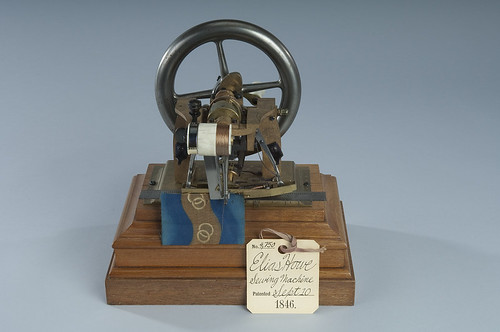10 September 1846 – Elias Howe gets a patent for the sewing machine.
While working as a journeyman machinist, Elias Howe Jr. wrestled for years to find a way to mechanize sewing. With the family pinched by poverty, his wife sewed for others by hand at home. Watching her sew, Howe visualized ways to mechanize the process. In 1845, he built his first sewing machine and soon constructed an improved model, which he carried to the Patent Office in Washington to apply for a patent. He received the fifth United States patent for a sewing machine in 1846.
Howe’s patent claims were upheld in court to allow his claim to control the combination of the eye-pointed needle with a shuttle to form a lockstitch. Howe met with limited success in marketing his sewing machine. Subsequent inventors patented their versions of sewing machines, some of which infringed on Howe’s patent. He quickly realized his fortune depended on defending his patent and collecting royalty fees from sewing machine manufacturers. These royalty licenses granted companies the right to use the Howe patent on their machines.
In 1856, after years of lawsuits over patent rights, Elias Howe and three companies, Wheeler & Wilson, Grover and Baker, and I. M. Singer, formed the first patent pool in American industry. The organization was called the Sewing Machine Combination and/or the Sewing Machine Trust. This freed the companies from expensive and time-consuming litigation and enabled them to concentrate on manufacturing and marketing their machines.

